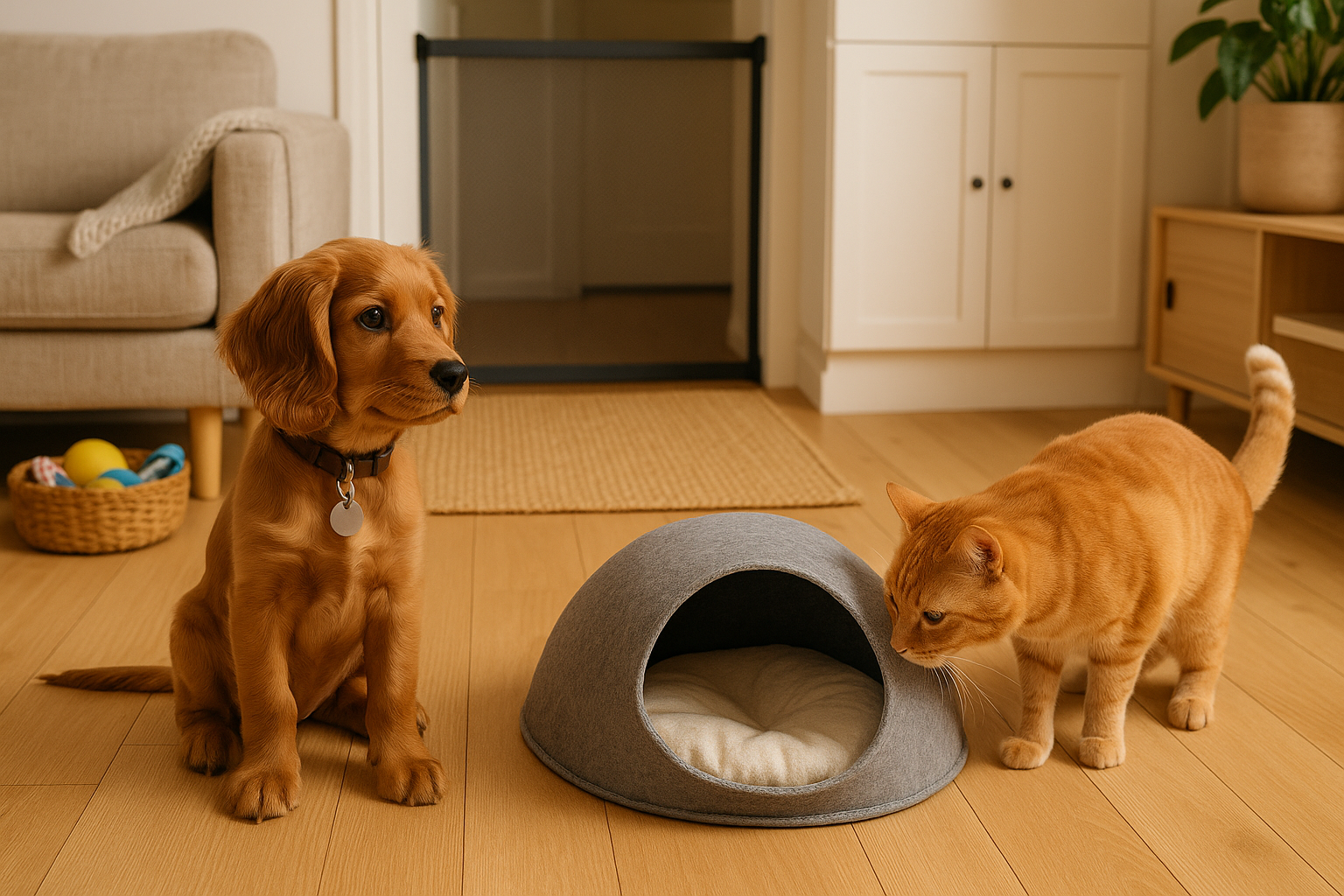Adopting a pet is one of life’s most rewarding experiences, filled with the promise of companionship and unconditional love. However, the journey of bringing a new animal into your life requires thoughtful preparation and a commitment to their well-being. To ensure a seamless transition for both you and your furry friend, this guide provides essential steps to create a nurturing environment from the moment they arrive.
1. Prioritize Safety First
Before your new pet steps into their new home, conduct a comprehensive safety check.
- Hazard Assessment: Look around your living space and remove small, delicate items that could be at risk of being knocked over or chewed on. This includes everything from coins and buttons to loose wires that could pose a choking hazard.
- Secure Toxic Substances: Store household cleaners, medications, and any plants that are harmful to pets in cabinets or on high shelves. This simple step can prevent accidents and keep your pet safe.
- Check Entry Points: Ensure all windows and doors are secure, and use pet gates to block off areas that may be hazardous, such as staircases and balconies.
Creating a safe environment lays the foundation for a positive relationship from the very beginning.
2. Designate Cozy Spaces
Establishing specific areas for your pet will help them feel more settled and comfortable.
- Comfort Zone: Create a quiet retreat with soft bedding or a blanket in a low-traffic area. This will give your pet a space where they can relax away from any commotion.
- Feeding Station: Choose a designated area for their food and water bowls. Keeping this space clean and consistent helps your pet know where to eat and drink.
- Play Area: Stock up on engaging toys that are appropriate for your pet’s age and size. Interactive toys, in particular, are great for stimulating their minds and keeping them active.
Defining these spaces not only aids in your pet’s adjustment but also helps you establish routines together.
3. Gather Essential Supplies Ahead of Time
Preparation is key to ensuring your new pet feels at home right away.
- Feeding Essentials: Opt for high-quality, durable bowls—stainless steel or ceramic works best—for food and water. They are not only long-lasting, but also easier to clean.
- Identification: Invest in a properly fitting collar with an ID tag that includes your contact information. Microchipping is also a wise choice for added peace of mind.
- Transport Solutions: Secure a proper carrier or crate for safe transport to the vet or during travel. Make sure it is well-ventilated and appropriately sized.
- Grooming and Toys: Assemble grooming tools, leashes, and a selection of stimulating toys to keep your pet entertained and to promote bonding through play.
Having these essentials prepared shows your commitment to providing a loving home.
4. Schedule a Veterinary Visit
A trip to the vet shortly after adoption is crucial for your pet’s health.
- Wellness Check: Schedule an initial appointment for a health examination, vaccinations, and to discuss dietary needs. This step is vital for ensuring your pet starts their new life off on the right paw.
- Preventative Care: Discuss options for parasite control and vaccinations to keep your pet healthy and safe from illness.
Regular veterinary care is the cornerstone of a long, happy life for your pet.
5. Establish a Routine
Establishing a daily rhythm can help your new companion adjust smoothly.
- Controlled Exploration: In the initial days, restrict their access to one or two rooms. Gradually allow them to explore more of the house as their confidence grows.
- Consistency is Key: Maintain regular feeding times, exercise schedules, and bathroom breaks. Animals thrive on routine and predictability, which helps them feel secure.
This structured approach fosters trust and helps your pet acclimate more quickly to their new environment.
6. Socialization is Essential
Helping your pet acclimate to new people and other animals is important for their social development.
- Introduce Slowly: Allow family members to meet your new pet one at a time, facilitating calm interactions in a low-stress setting.
- Managing Existing Pets: If you have other pets, introduce them in a neutral area. Monitor their interactions closely to mitigate any conflicts or anxiety.
Gradual introductions help establish positive relationships and set the stage for harmonious living.
7. Be Prepared for Emergencies
Taking proactive steps for potential emergencies is crucial for your peace of mind.
- Emergency Kit: Assemble a kit that includes extra food, water, medications, and basic first-aid supplies. Include contact numbers for your veterinarian and any local emergency clinics.
- Know Your Resources: Familiarize yourself with the nearest veterinary hospital and have important contact information readily accessible.
Being prepared ensures that you can respond appropriately in any situation.
8. Quick Reference Checklist
| Step | Task |
|---|---|
| 1 | Eliminate hazards and secure unsafe areas |
| 2 | Create spaces for rest, meals, and play |
| 3 | Gather necessary supplies |
| 4 | Book the initial veterinary appointment |
| 5 | Establish a routine |
| 6 | Introduce family and pets gradually |
| 7 | Prepare for emergencies and outings |
Final Thoughts
Adopting a pet is a transformative experience that enriches both your life and theirs. With commitment, preparation, and a loving approach, you can create a nurturing environment that fosters a deep and lasting bond. Remember, it’s your dedication to their health and happiness that will shape your shared journey. Embrace the adventure; a lifetime of joy awaits!
